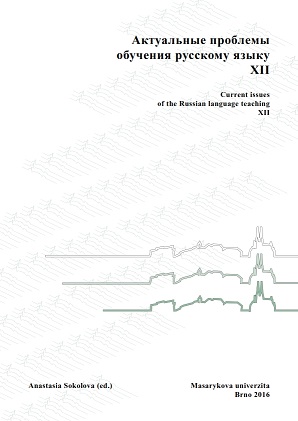Вариативность на уровне формообразования глаголов в русском языке
Variation in the verb formation in the Russian language
Author(s): Elena Ivanovna Kolosova
Subject(s): Morphology, Syntax, Eastern Slavic Languages
Published by: Masarykova univerzita nakladatelství
Keywords: Russian language; verb formation; grammatical synonymy; literary norm; communication;
Summary/Abstract: The Russian language is characterized by a big number of parallel forms at the level of verb formation which can be the reason for a lot of problems when communicating. At the same time the problem ofvariability in the Russian literary language at the level the verb formation hasn’t yet been studied thoroughly in spite of the careful attention paid to the verb category research by scientists. In the past there were more parallels ofthis kind and modern period of the development is still marked by some variations in choosing the verb form. This means that the problem of variation is still a topical problem of the linguistics. However there are not strict rules for the usage of these variations of the verb forms and it can lead to some problems when teaching the Russian language. Detailed study of each type of the variation in the history of the language gives an opportunity to propose perspectives of the phenomena development and will help to create general rules for the forms usage. The following article studies double parallels the verb forms have at the modern stage of the Russian language development. First of all these are verb forms of the present tense ending in –ать (for example каплет и капает, машет и махает etc); variative forms of the past tenses in verbs with suffix -ну- (for example (мокнул и мок etc) an the others. When teaching Russian as a foreign language one should pay attention to the usage of these parallel forms in the speech, accompany the teaching with available historic comments; give recommendations about the usage of these forms in accordance with their stylistic and semantic differentiation in the language. We consider this deviation from the norms of the modern language to be the common feature of all forms.
Book: Aктуальные прoблeмы обучения русскому языку XII
- Page Range: 185-193
- Page Count: 9
- Publication Year: 2016
- Language: Russian
- Content File-PDF

